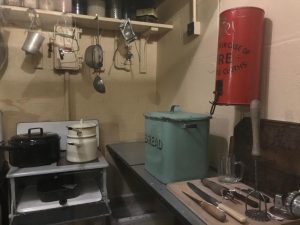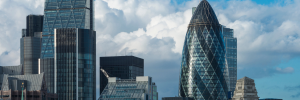Locating Bloomsbury
Bloomsbury is a historic district nestled within a quadrangle of notable streets in London. Its western limit is marked by Tottenham Court Road, while Southampton Row defines the eastern boundary. The district stretches southward to New Oxford Street. Euston Road could be considered the northern boundary, although it’s often identified as part of St Pancras.
Bloomsbury is famous for its rich cultural heritage. This district hosts one of the highest densities of listed buildings and monuments in any conservation area, including several of the UK’s most iconic structures, like the British Museum. Known for its associations with arts, education, and medicine, Bloomsbury is synonymous with intellectual and artistic pursuits.
The Origin of the Bloomsbury Set
In 1904, after their father, renowned writer and critic Sir Leslie Stephen, passed away, sisters Virginia and Vanessa moved from Kensington to Bloomsbury. Their house at 46 Gordon Square soon transformed into a hotbed of intellectual and artistic activity, attracting a diverse crowd for their ‘Thursday Evenings.’
Their brother, Thoby Stephen, introduced his friends from the ‘Apostles’ group at Cambridge University to these gatherings. These meetings provided a platform for intense debates on everything from art to Britain’s declining empire.
The Bloomsbury Set’s Philosophy
The ‘Bloomsberries,’ as they were known, were proponents of a culture that celebrated sexual equality and freedom. Influenced by works like G.E. Moore’s Principia Ethica and A.N. Whitehead’s and Bertrand Russell’s Principia Mathematica, they sought the definitions of good, true, and beautiful. Their beliefs and practices sharply contrasted with their strict Victorian upbringings.
Prominent Members of the Bloomsbury Set
The Bloomsbury Set comprised English artists, writers, and intellectuals, including Virginia Woolf, her sister Vanessa Bell, Clive Bell, Leonard Woolf, Lytton Strachey, Thoby Stephen, and Saxon Sydney-Turner. By around 1910, others like economist John Maynard Keynes, salon hostess Lady Ottoline Morrell, painters Duncan Grant and Roger Fry, writer Vita Sackville-West, her diplomat husband Harold Nicolson, and philosopher Bertrand Russell joined the group.
This intellectual melting pot led to some of the most impactful works in English modernism, such as Strachey’s Eminent Victorians, Keynes’s Economic Consequences of the Peace, Virginia Woolf’s Mrs Dalloway, and the expressive paintings of Vanessa Bell and Duncan Grant.
Criticism and Dissolution of the Bloomsbury Set
Post-war, the Bloomsbury Set faced considerable criticism for perceived elitism and self-regard. The group gradually faded by the early 1930s, as London’s intellectual scene evolved. Even though its members shared certain ideas and values, the Bloomsbury Set wasn’t a formal school. Its significance lies in the incredible talent of the individuals associated with it.
Virginia Woolf and Mrs Dalloway
In Virginia Woolf’s Mrs Dalloway, the protagonist’s journey to buy a pencil takes her through the streets of London. Her exploration of the city brims with an appreciation of life and a love for London in June:
“Passing, glimpsing, everything seems accidentally but miraculously sprinkled with beauty…Standing out in the street, one may build up all the chambers of an imaginary house and furnish them at one’s will … She wanders the streets glowing with excitement.”
Mrs Dalloway is firmly rooted in the established order, her thoughts flitting between her upbringing among the landed gentry and her preparations for a grand evening party. The streets of London fill her with delight and inspire her:
“In people’s eyes, in the swing, tramp, and trudge; in the bellow and the uproar; the carriages, motor cars, omnibuses, vans, sandwich men shuffling and swinging; brass bands; barrel organs; in the triumph and the jingle and the strange high singing of some aeroplane overhead was what she loved; life; London; this moment of June.”
Bloomsbury and Beyond
The Bloomsbury Set, much like the district they hailed from, represents a significant cultural epoch in the early 20th-century London. Their contributions continue to resonate in the spheres of art, literature, economics, and philosophy, leaving an enduring impact on our understanding of the period. Virginia Woolf’s depiction of Bloomsbury through Mrs Dalloway’s eyes encapsulates the spirit of the time, capturing the district’s essence with her eloquent prose.
Bloomsbury is not just a geographic location. It is a symbol of a period marked by artistic exploration, intellectual debates, and the daring defiance of established norms. The Bloomsbury Set’s imprint on this district, and indeed the world, remains visible even today, more than a century after they first gathered in a house at 46 Gordon Square.
Hazel Baker is an award-winning London Tour Guide and qualified CIGA guide who delivers guided walks and private tours in London. View all of Hazel’s walking tours.




